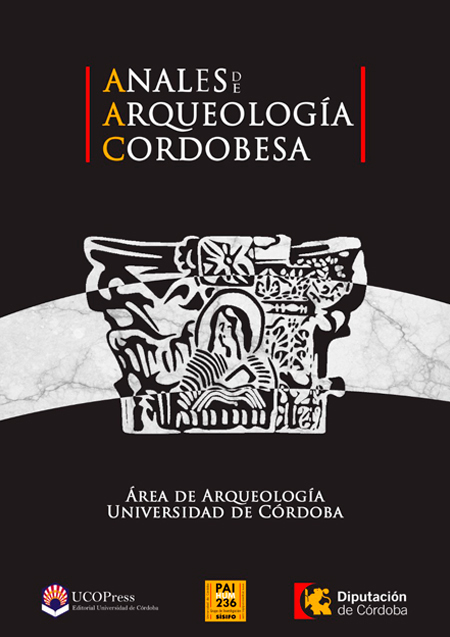The use of marble in the architecture of Asturica Augusta
DOI:
https://doi.org/10.21071/aac.v0i0.6455Keywords:
Hispanic marbles, marbles from León, Portuguese marbles, imperial marbles, petrography, cathodoluminescence, chronology, trade routes, elites.Abstract
The essay studies the marble building materials found in the archeological digs of Asturica Augusta between 1971 and 1994. The combination of petrography and cathodoluminescence have identified the major use of different ornamental stones from León (pink and cream limestone griottes from Láncara Formation, white limestones from Vegadeo, white and grey marbles from Cuevas del Sil and San Fiz and maroon limestone from Cantabrian mountains), also white and grey portuguese marbles from Estremoz Anticline, Viana do Alentejo and Trigaches. Its use, since Augustian period, became widespread between Claude and the Flavians. Also, it discusses the possible approaches, according to the different hypotheses made by some authors.Downloads
Download data is not yet available.
Downloads
Published
2011-12-01
How to Cite
CISNEROS CUNCHILLOS, M., SOMOVILLA DE MIGUEL, I. A., & LÓPEZ GARCÍA, A. (2011). The use of marble in the architecture of Asturica Augusta. Anales De Arquelogía Cordobesa, 93–126. https://doi.org/10.21071/aac.v0i0.6455
Issue
Section
ARTICLES
License
Aquellos autores/as que tengan publicaciones con esta revista, aceptan los términos siguientes:- Los autores/as conservarán sus derechos de autor y garantizarán a la revista el derecho de primera publicación de su obra, el cuál estará simultáneamente sujeto a la Licencia de reconocimiento de Creative Commons que permite a terceros compartir la obra siempre que se indique su autor y su primera publicación esta revista.
- Los autores/as podrán adoptar otros acuerdos de licencia no exclusiva de distribución de la versión de la obra publicada (p. ej.: depositarla en un archivo telemático institucional o publicarla en un volumen monográfico) siempre que se indique la publicación inicial en esta revista.
- Se permite y recomienda a los autores/as difundir su obra a través de Internet (p. ej.: en archivos telemáticos institucionales o en su página web) antes y durante el proceso de envío, lo cual puede producir intercambios interesantes y aumentar las citas de la obra publicada. (Véase El efecto del acceso abierto).


